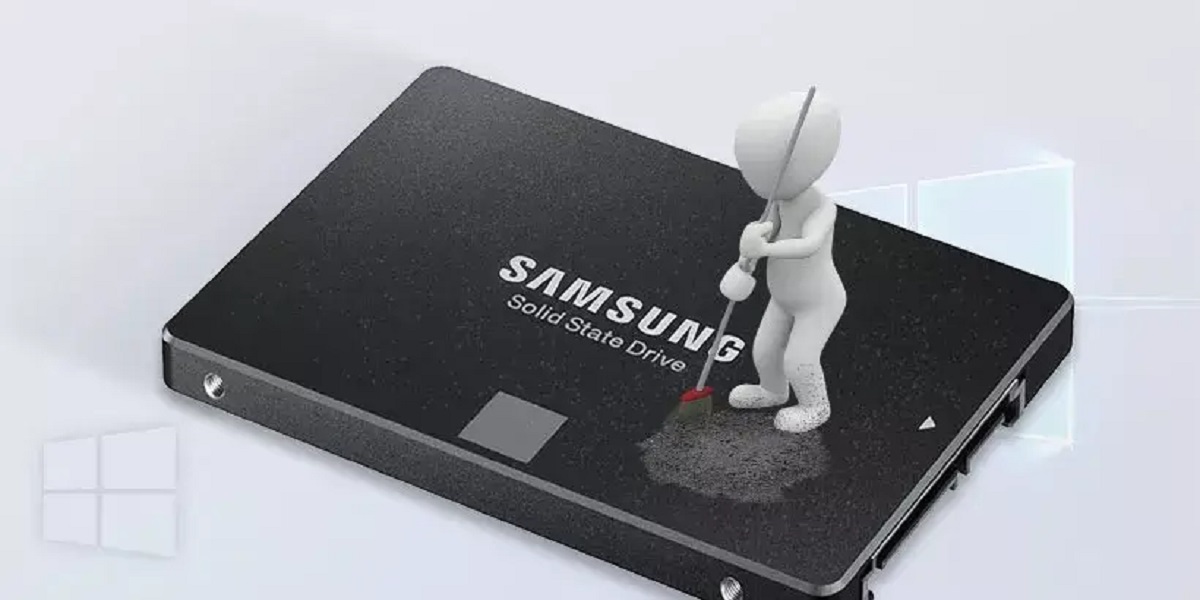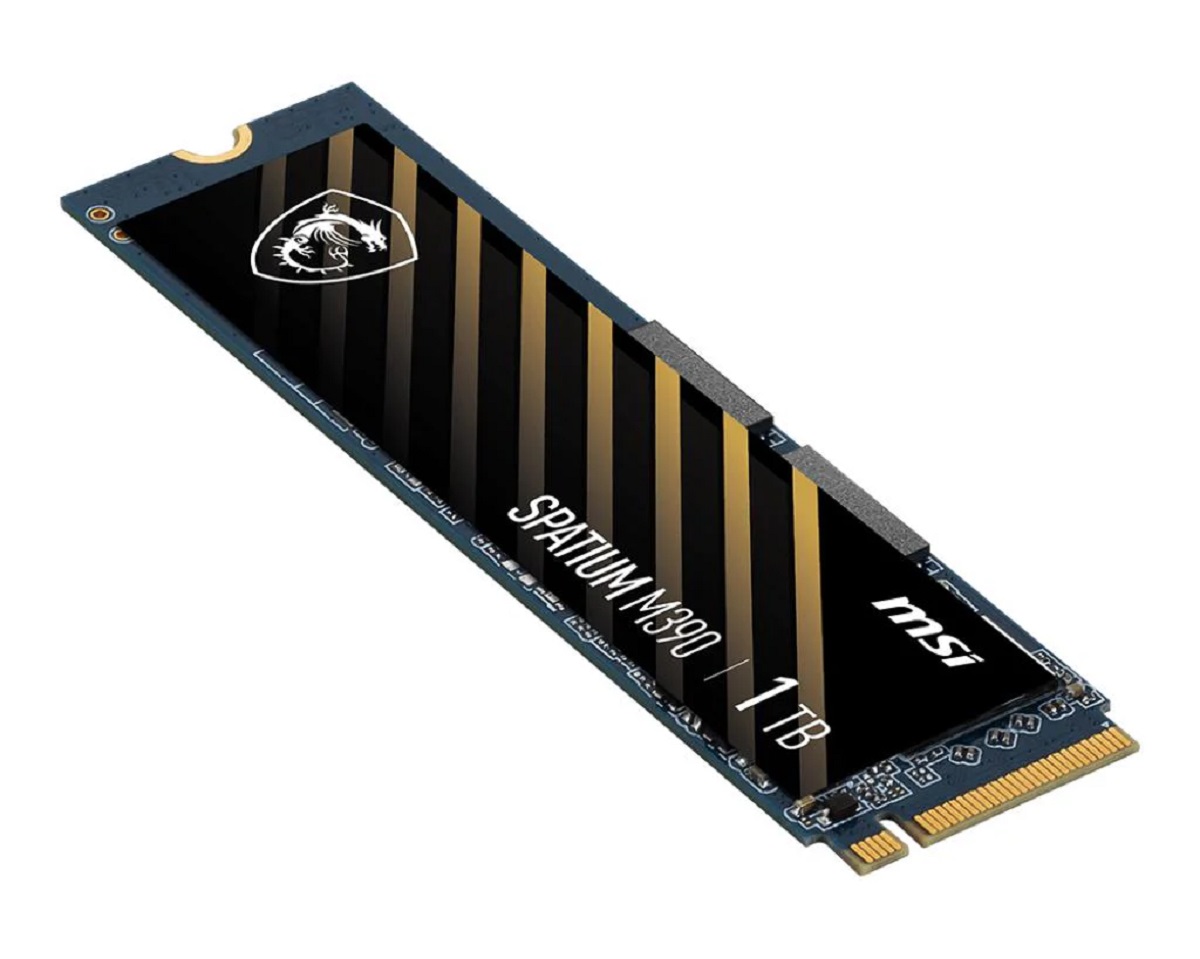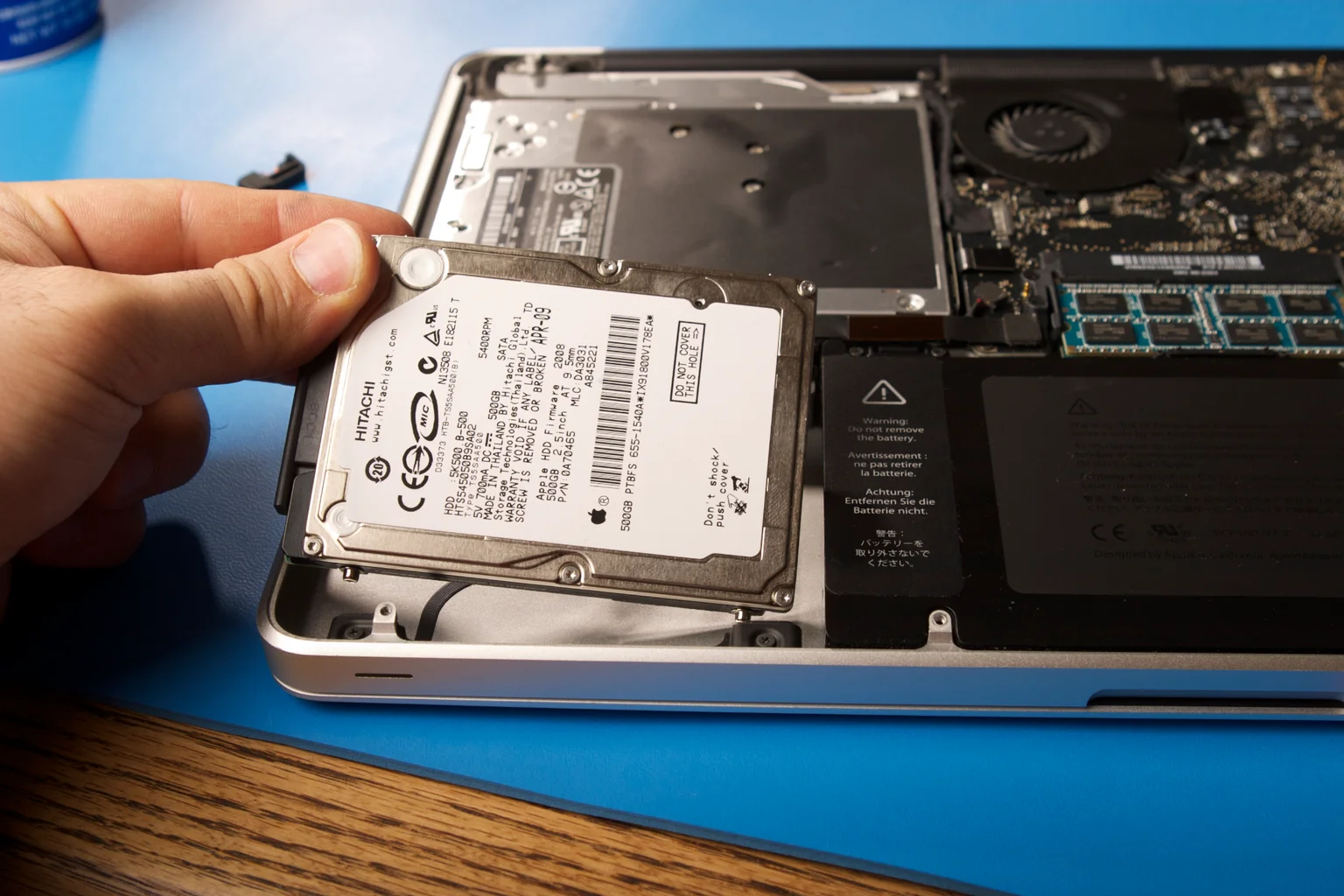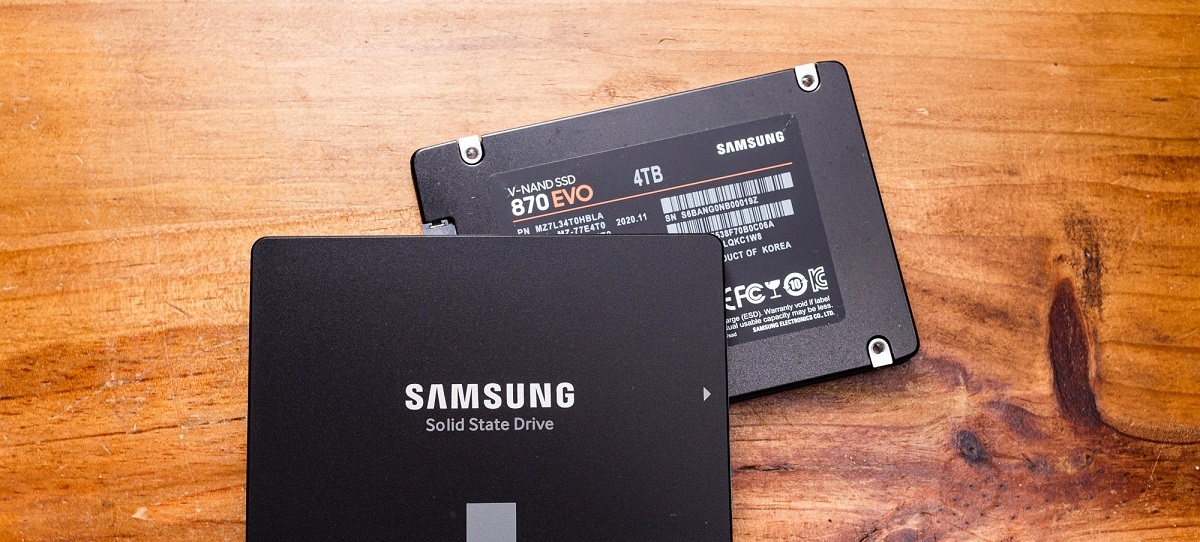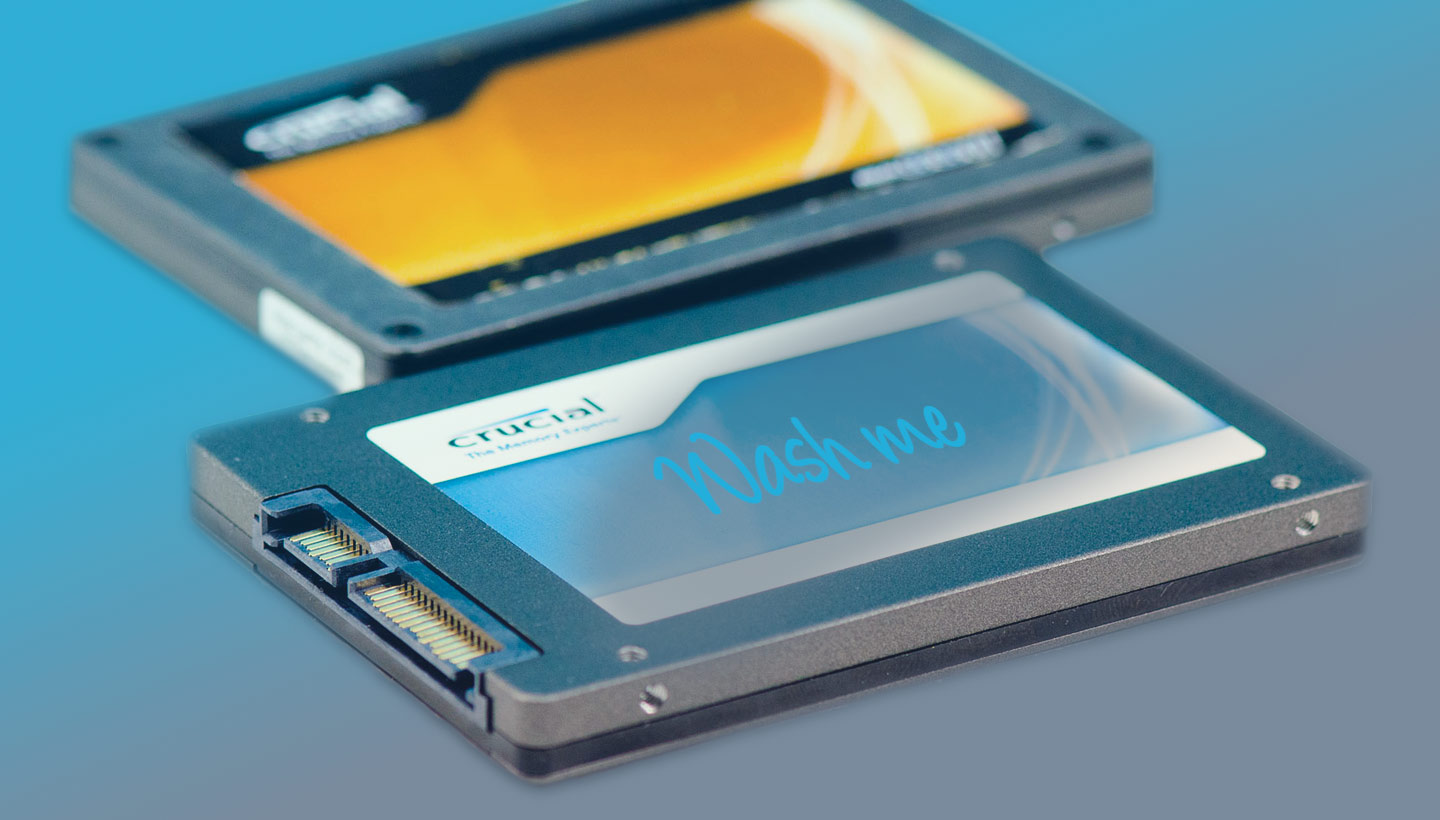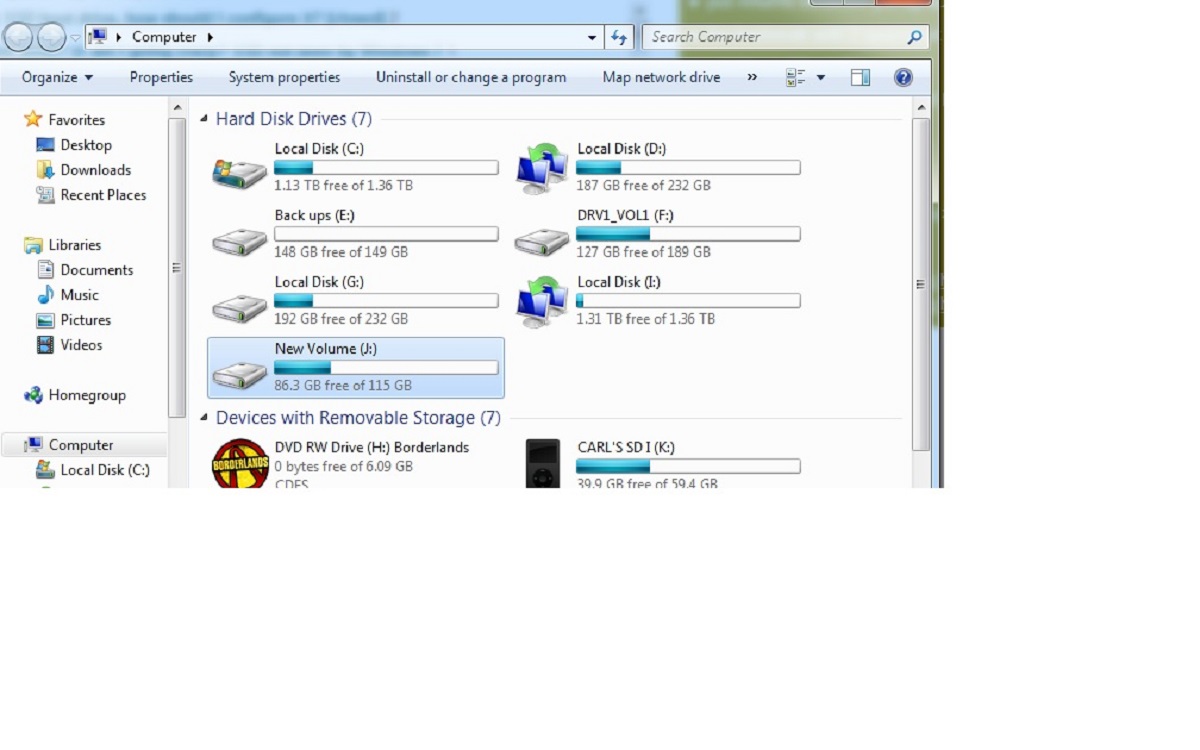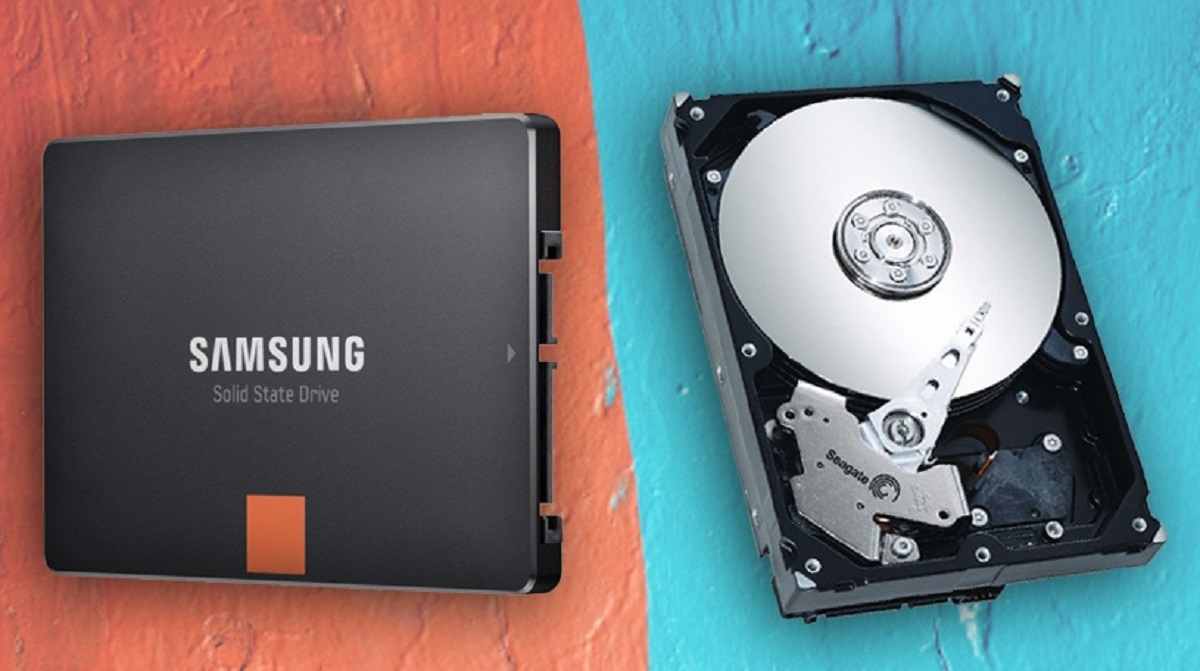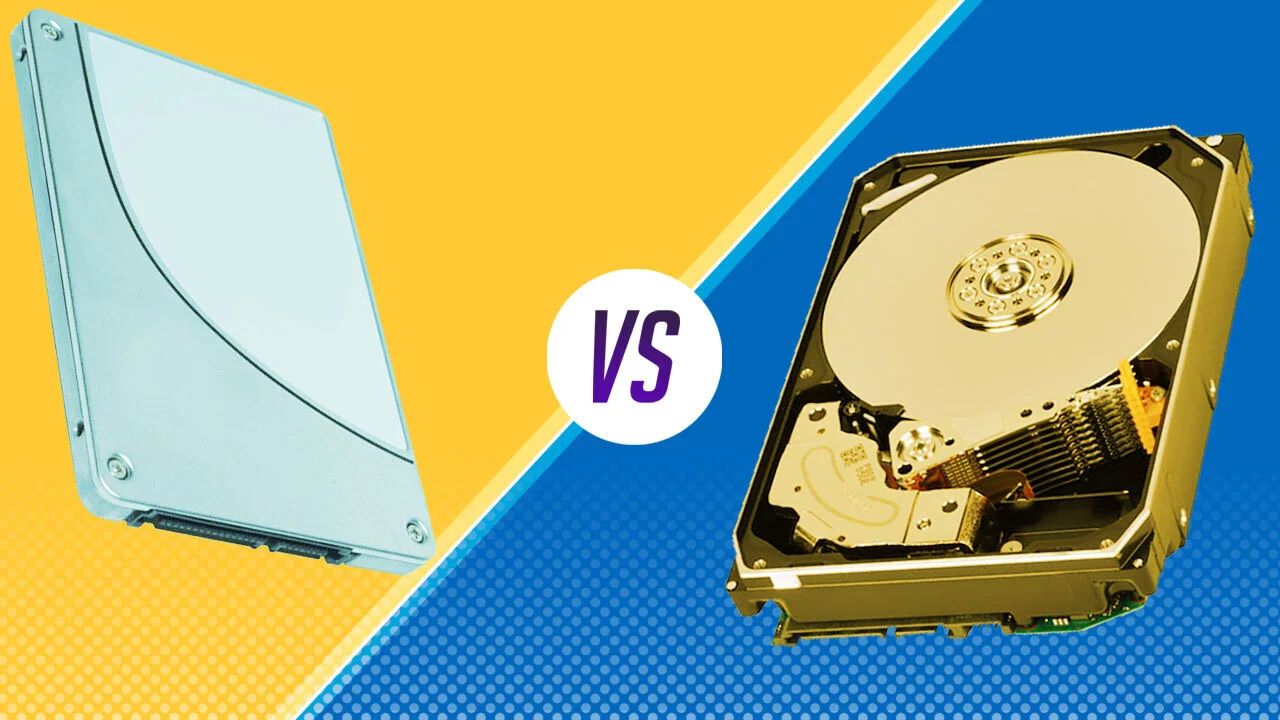Introduction
When it comes to optimizing the performance and longevity of a solid-state drive (SSD), clearing space is of utmost importance. SSDs are known for their speed and reliability, but without proper management, they can become cluttered and hindered in their performance. This article will guide you through the process of clearing space on your SSD, ensuring that it runs efficiently and smoothly.
Whether you are a casual home user or a professional relying on your SSD for heavy workloads, it is crucial to periodically free up space on your drive. This not only improves the overall speed and responsiveness of your system but also extends the lifespan of your SSD by reducing unnecessary read/write cycles.
In this article, we will explore various methods to clear space on your SSD, including removing unnecessary files, clearing temporary files and caches, deleting old system and user backups, utilizing cloud storage and external drives, optimizing settings and configurations, and even defragmenting the SSD.
By following the recommendations provided, you can ensure that your SSD operates at its optimal level, allowing you to have a seamless and efficient computing experience.
So, whether you’re running out of space on your SSD or just want to maintain its performance, let’s dive into the various techniques that will help you clear space and optimize your solid-state drive.
Why is it important to clear space on a solid state drive?
Clearing space on a solid-state drive (SSD) is not just about tidying up your storage; it has significant implications for the performance, longevity, and overall functionality of your SSD. Here are several reasons why clearing space on your SSD is essential:
- Improved performance: SSDs rely on free space to optimize read and write operations. When your SSD is near full capacity, it can slow down your system’s performance. By clearing space, you allow the SSD to work more efficiently, resulting in faster boot times, quicker file transfers, and improved overall responsiveness.
- Extend SSD lifespan: SSDs have a limited number of write cycles before they may fail. When the drive is near capacity, it needs to constantly shuffle data around, leading to additional wear and tear. By clearing space, you reduce the number of write operations, thereby prolonging the lifespan of your SSD.
- Prevent file fragmentation: When files are constantly modified, they can become fragmented, meaning they are stored in different physical locations on the SSD. This fragmentation can impact file access speeds. By clearing space, you provide more room for files to be stored contiguously, reducing fragmentation and improving efficiency.
- Make room for essential updates: Operating system updates, driver installations, and software upgrades often require a substantial amount of free space. If your SSD is full, you may encounter issues when trying to install these critical updates. Regularly clearing space ensures that you have room for important system enhancements and security patches.
- Backup and recovery: When performing regular backups, you need sufficient space on your SSD to store them. By clearing space, you not only make room for backups but also ensure that your system is adequately prepared for data recovery in case of a failure or accidental deletion.
Overall, clearing space on your SSD is vital for maintaining optimal performance, prolonging the lifespan of the drive, preventing file fragmentation, accommodating essential updates, and facilitating reliable backups. By following the techniques outlined in this article, you can effectively manage your SSD’s storage and enjoy a seamless computing experience.
Assessing the current storage situation
Before embarking on the task of clearing space on your solid-state drive (SSD), it’s essential to assess your current storage situation. This evaluation will help you understand how your SSD is being utilized and identify areas where you can free up space. Here are some steps to assess your storage:
- Check overall disk usage: Start by checking the disk usage on your SSD. On Windows, you can do this by opening File Explorer, right-clicking on your SSD drive, selecting “Properties,” and reviewing the “General” tab. On macOS, go to “About This Mac” and click on the “Storage” tab. This will give you a high-level overview of how much space is being used.
- Identify large files and folders: Look for large files and folders that are taking up significant space on your SSD. Sort files by size, and analyze whether you still need these files. Consider deleting or moving them to an external storage device or cloud storage if they are not regularly accessed.
- Assess installed applications: Review the list of installed applications on your SSD. Uninstall any unnecessary or unused programs that are taking up valuable space. Check for duplicate applications or older versions of software that can be removed.
- Examine user and system backups: Determine the size of user backups, such as documents, photos, and videos, and consider moving them to external storage or cloud services. Additionally, check for system backups created by your operating system and remove older backups that are no longer necessary.
- Review temporary files and caches: Temporary files and caches accumulate over time and can consume a significant amount of space. Clearing these files can free up valuable SSD capacity. Use disk cleanup tools provided by the operating system or third-party utilities to safely remove these files.
By thoroughly assessing your current storage situation, you can identify the areas where space can be reclaimed on your SSD. This analysis will provide you with valuable insights and help you determine the most effective strategies for clearing space on your drive. In the following sections, we will explore specific techniques and methods to remove unnecessary files, optimize settings, and ensure that your SSD operates at its best.
Removing unnecessary files and programs
One of the most effective ways to clear space on your solid-state drive (SSD) is to remove unnecessary files and programs. By getting rid of unneeded data, you can reclaim valuable storage capacity and optimize the performance of your SSD. Here are some steps to remove unnecessary files and programs:
- Delete unused files and folders: Start by reviewing your files and folders and identifying those that are no longer necessary. This includes old documents, duplicate files, and any files that have been backed up elsewhere. Delete these files to free up space on your SSD.
- Uninstall unused programs: Assess the applications installed on your SSD and uninstall any that are no longer needed. Many programs come with built-in uninstallers, or you can use the control panel on Windows or the Applications folder on macOS to remove them. Be cautious when uninstalling programs and ensure that you’re not removing any critical software.
- Remove unnecessary browser extensions: Browser extensions can consume memory and storage space. Review your installed extensions and remove any that are no longer in use or are causing performance issues. This can be done through the extension management settings in your respective browser.
- Clean up your downloads folder: The downloads folder is often a repository for files that are no longer needed. Sort through the files in this folder and delete any that are no longer required. Consider moving important files to appropriate locations on your SSD or other storage devices.
- Empty the recycle bin or trash: When you delete files, they are often moved to the recycle bin or trash folder. Emptying these folders will permanently delete the files and free up storage space on your SSD.
Removing unnecessary files and programs not only helps to free up space but also declutters your SSD, leading to improved organization and better overall system performance. It is advisable to regularly perform these cleanup tasks to ensure that your SSD remains optimized and that you have ample storage for your important files and applications.
Clearing temporary files and caches
Temporary files and caches accumulate over time on your solid-state drive (SSD) and can consume a significant amount of storage space. Clearing these files not only helps to free up capacity but also improves the performance of your SSD. Here are some ways to clear temporary files and caches:
- Use the built-in disk cleanup tool: Both Windows and macOS offer built-in disk cleanup tools that can effectively delete temporary files and caches. On Windows, you can access it by typing “Disk Cleanup” in the search bar and selecting the desired drive to clean. On macOS, you can open the “About This Mac” menu, click on the “Storage” tab, and then select “Manage” to free up space.
- Clear browser caches: Internet browsers store temporary files, cookies, and other data to enhance browsing performance. However, these files can accumulate over time and take up valuable space. Most browsers have a built-in feature to clear caches. Find the appropriate settings in your browser to clear the cache and temporary files.
- Remove system temporary files: In addition to browser caches, your operating system also generates temporary files that can accumulate on your SSD. These files include log files, system files, and error reports. Windows users can use the built-in disk cleanup tool mentioned earlier to remove system temporary files. On macOS, you can check for temporary files that can be cleared using third-party utilities or the Terminal.
- Clear application-specific caches: Some applications store temporary data in caches to improve their performance. However, these caches can grow in size over time. Check the settings or preferences of specific applications to clear their respective caches. For example, media editing software, web development tools, and email clients often have options to clear their caches.
- Consider using third-party cleanup utilities: There are various third-party cleanup utilities available that can help automate the process of clearing temporary files and caches. These utilities offer more advanced features and comprehensive scanning of your SSD to identify unnecessary files, freeing up space quickly and efficiently.
Clearing temporary files and caches is an effective way to reclaim storage space on your SSD and improve overall system performance. It is recommended to perform these cleanup tasks regularly or use automated utilities to ensure that your SSD remains optimized and runs smoothly.
Deleting old system and user backups
System and user backups are essential for safeguarding your data and ensuring that you can restore your system in the event of a failure. However, older backups can take up a significant amount of space on your solid-state drive (SSD), especially if you’ve been regularly creating backups. To free up valuable storage capacity, it’s important to delete old system and user backups that you no longer need. Here are some steps to guide you through the process:
- Identify and evaluate backups: Start by identifying the backups stored on your SSD. Determine which ones are still necessary for data restoration. Evaluate the age and relevance of each backup, as well as the total storage space they occupy.
- Delete redundant or outdated backups: Remove redundant or outdated backups that are no longer needed. Consider keeping recent backups and those that contain critical data or system configurations. Be cautious when deleting backups and ensure that you have alternative copies stored elsewhere for safekeeping.
- Move backups to external storage: If you need to preserve older backups but want to free up space on your SSD, consider moving them to external storage devices, such as external hard drives or network-attached storage (NAS) devices. This allows you to access the backups when needed without occupying SSD space.
- Utilize cloud storage for backups: Another option is to utilize cloud storage services for your backups. Cloud storage provides a convenient and secure off-site location for storing your backups, freeing up space on your SSD. Many backup software solutions offer seamless integration with cloud storage providers.
- Set up automated backup retention policies: To avoid continuously accumulating backups on your SSD, set up automated backup retention policies. These policies specify how long backups are retained before being automatically deleted. This ensures that only the most recent and relevant backups are stored on your SSD.
Deleting old system and user backups not only helps to regain storage space on your SSD but also ensures that backup management remains efficient and effective. By regularly assessing and removing outdated backups, you can maintain an organized and optimized backup strategy while maximizing the available storage capacity on your SSD.
Utilizing cloud storage and external drives
When it comes to clearing space on your solid-state drive (SSD), utilizing cloud storage and external drives can be a game-changer. These solutions offer additional storage capacity and provide a convenient way to offload files and data from your SSD. Here’s how you can take advantage of cloud storage and external drives:
- Cloud storage: Cloud storage services, such as Google Drive, Dropbox, and OneDrive, allow you to store files and data online, accessible from any device with an internet connection. By moving files to the cloud, you can free up space on your SSD while ensuring that your data is securely backed up and easily accessible. Simply choose the files or folders you want to upload, and they will be synced to the cloud storage service.
- Automated cloud backup: In addition to manual file transfers, most cloud storage providers offer automated backup solutions. These services continuously back up your files and folders in the background, ensuring that your data is always protected. With automated cloud backups, you can have peace of mind knowing that your files are safely stored off-site, freeing up space and minimizing the need for manual transfers.
- External drives: External drives, such as USB flash drives and external hard drives, provide portable storage options that can be easily connected to your computer. Transferring files to an external drive allows you to free up space on your SSD without permanently deleting the files. This is especially useful for larger files, such as media libraries or project files, that you may not need immediate access to.
- Regularly backup and archive: Utilizing cloud storage and external drives is not just about clearing space; it’s also about ensuring that your important files and data are backed up and preserved. Set up regular backup routines to automatically transfer files from your SSD to the cloud or external storage. Additionally, consider archiving files that you don’t need for everyday use but still want to keep for future reference. Archiving allows you to remove these files from your SSD while keeping them accessible when required.
- Sync and access files on-demand: With cloud storage and external drives, you can sync files across multiple devices, allowing you to access your data whenever and wherever you need it. This means you don’t need to store all files locally on your SSD, further reducing space constraints and enabling better accessibility.
By utilizing cloud storage services and external drives, you can expand your storage capacity, clear space on your SSD, and ensure the safety and accessibility of your files. Take advantage of these storage options to optimize your SSD’s performance and efficiently manage your files and data.
Optimizing settings and configurations
Optimizing the settings and configurations of your computer can go a long way in clearing space on your solid-state drive (SSD). By making adjustments to how your system handles storage and data, you can effectively manage space usage and improve overall performance. Here are some ways to optimize settings and configurations:
- Change default file locations: By default, many applications and the operating system store files on your main SSD. You can change the default save locations to another drive or partition with more available space. For example, you can configure your web browser to download files directly to an external drive or change the default location for documents and media files to a different storage device.
- Disable hibernation: Hibernation is a power-saving feature that stores your system’s current state to disk, allowing you to resume exactly where you left off even after a complete shutdown. However, hibernation requires a significant amount of space equal to the amount of RAM installed. Disabling hibernation can free up considerable space on your SSD. You can disable it through the command prompt or power options settings in Windows.
- Adjust virtual memory settings: Virtual memory, also known as the page file, is an area on your SSD used by your operating system as additional memory when the physical RAM is insufficient. However, the default settings can allocate a significant amount of SSD space. You can optimize virtual memory by adjusting the size or moving it to another drive with more storage capacity.
- Limit system restore points: System restore points are useful for recovering your system to a previous state, but they can consume a significant portion of your SSD’s storage capacity. Limit the number of restore points or reduce the allotted space for system restore to free up SSD space. You can adjust these settings in the System Protection settings on Windows.
- Disable unnecessary startup programs: Many programs automatically launch at startup, consuming valuable SSD resources. Review the list of startup programs and disable those that you don’t need to start automatically. This can be done through the Task Manager in Windows or the Login Items settings on macOS.
- Compress files and folders: Compressing files and folders on your SSD can reduce their physical size and free up space. However, keep in mind that compressed files may require additional system resources to access and could slightly impact performance. Use the built-in compression feature of your operating system or third-party compression utilities.
By optimizing settings and configurations, you can effectively manage space usage on your SSD and ensure that it is utilized more efficiently. These adjustments not only help to clear space but also improve overall system performance by reducing unnecessary read/write operations and minimizing the strain on your SSD.
Defragmenting the solid-state drive
Defragmentation is a process commonly associated with traditional hard disk drives (HDDs), but it has a different implication when it comes to solid-state drives (SSDs). Unlike HDDs, where defragmentation improves performance, defragmenting an SSD can actually have a negative impact on both performance and the lifespan of the drive. Therefore, it is generally not recommended to defragment an SSD. Here’s why:
SSDs use a different technology called NAND flash memory, which allows for near-instantaneous access to data without any moving parts. Unlike HDDs that store data on spinning disks, the data on an SSD is spread across multiple memory cells. When files are accessed, the SSD can retrieve data from multiple memory locations simultaneously, resulting in fast read and write speeds.
Defragmentation on SSDs is unnecessary and can even be detrimental due to a few key reasons:
- Wear and tear: Each memory cell on an SSD has a limited lifespan, measured in program-erase (P/E) cycles. Defragmentation involves moving data around, causing more write operations and reducing the lifespan of the drive.
- No seek time: Unlike HDDs, SSDs have no mechanical moving parts, so there is no seek time involved in retrieving data. The access time is virtually instantaneous regardless of the physical location of the data on the drive.
- Performance optimization: SSDs use wear-leveling algorithms that distribute data evenly across the drive to prevent certain cells from wearing out faster than others. The SSD’s firmware already optimizes data allocation and ensures efficient performance without the need for defragmentation.
It’s important to note that modern operating systems are aware of the differences between HDDs and SSDs, and they have built-in optimizations for managing SSDs. These optimizations, such as TRIM support, garbage collection, and wear-leveling algorithms, work behind the scenes to maintain the performance and longevity of your SSD without the need for manual defragmentation.
In summary, defragmenting an SSD is generally unnecessary and can actually reduce the lifespan of the drive. Instead, trust the built-in optimizations of your operating system and focus on other techniques, such as clearing space, optimizing settings, and managing backups, to ensure that your SSD operates at its best.
Conclusion
Clearing space on a solid-state drive (SSD) is crucial for maintaining optimal performance, prolonging the lifespan of the drive, and ensuring efficient storage management. By following the techniques outlined in this article, you can effectively clear space on your SSD and optimize its performance. Assessing the current storage situation, removing unnecessary files and programs, clearing temporary files and caches, deleting old system and user backups, utilizing cloud storage and external drives, optimizing settings and configurations, and understanding the limitations of defragmentation are all key steps in achieving an efficient and well-managed SSD.
Regularly reviewing your storage usage, deleting unnecessary files, and uninstalling unused programs are important for keeping your SSD clutter-free. Clearing temporary files, browser caches, system temporary files, and application-specific caches helps free up valuable space and improves system performance. Deleting old backups that are no longer needed and utilizing cloud storage or external drives provide additional storage options and peace of mind for data preservation. Optimizing settings and configurations, such as adjusting default file locations, disabling hibernation, and managing virtual memory, further enhance storage management and performance.
It’s important to note that defragmentation is unnecessary and potentially harmful to SSDs due to their different technology and built-in optimizations. By avoiding defragmentation and relying on the native functionality of your operating system, you can ensure that your SSD operates optimally without causing unnecessary wear and tear.
In the end, taking the time to clear space and optimize your SSD not only improves performance but also prolongs the lifespan of the drive, ensuring that you can enjoy efficient and reliable storage for years to come. By implementing these techniques into your SSD management routine, you can maintain a well-organized and high-performing computing experience.







